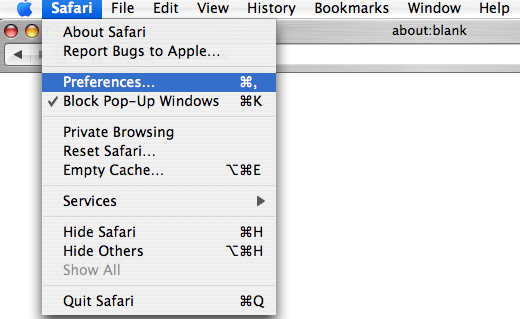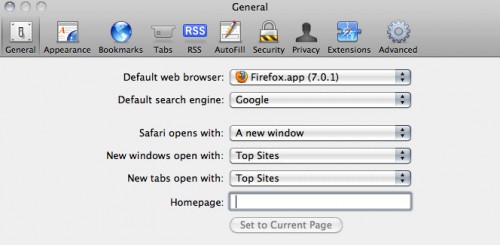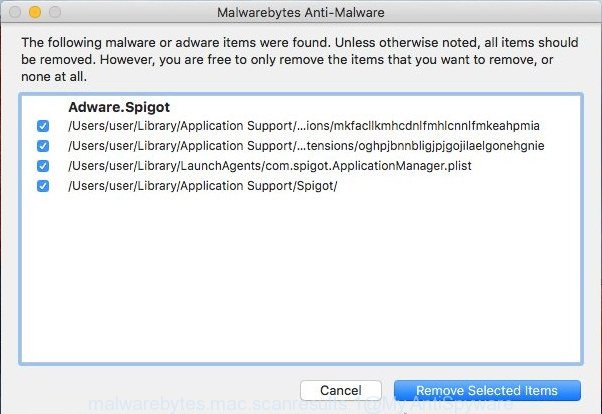What is DesktopCoordinator
According to security professionals, DesktopCoordinator is a PUP (potentially unwanted program) that falls under the category of Adware . Adware is form of apps developed to inject adverts into your Net browsing or even desktop experience. Adware can be developed to change your homepage, search engine, search results, or even add toolbars to your browser. Adware run in the background when browse the World Wide Web, and adware can slow down your MAC OS and affect its performance.

Unwanted ads
Does adware steal your data? Adware software can be used to collect marketing-type data about you to get profit. Adware software can analyze your surfing, and gain access to your privacy info and, afterwards, can share it with third-parties. Thus, there are more than enough reasons to remove adware from your MAC.
In this article we will discuss how can you get rid of DesktopCoordinator adware from the MAC manually or with free adware removal utilities compatible with compatible with modern operating systems.
How does DesktopCoordinator get on your Apple Mac
Adware spreads as a part of various free programs. This is certainly not an honest way to get installed onto your MAC. To avoid infecting of your Apple Mac and side effects in the form of numerous pop up windows and/or unwanted advertisements, you should always carefully read the Terms of Use and the Software license. Additionally, always choose Manual, Custom or Advanced install type. This allows you to disable the installation of third-party and often harmful apps.
Threat Summary
| Name | DesktopCoordinator, Desktop Coordinator 1.0 app |
| Type | adware software, potentially unwanted application (PUA), popup advertisements, pop-ups, pop up virus |
| Symptoms |
|
| Removal | DesktopCoordinator removal guide |
How to remove DesktopCoordinator
If you have consistent popups or unwanted advertisements, slow MAC system, crashing Apple Mac issues, you are in need of adware removal assistance. The step-by-step instructions below will guide you forward to get DesktopCoordinator adware removed and will assist you get your MAC system operating at peak capacity again.
To remove DesktopCoordinator, complete the steps below:
- How to manually delete DesktopCoordinator
- Automatic Removal of DesktopCoordinator adware
- How to stay safe online
- To sum up
How to manually delete DesktopCoordinator
First try to remove DesktopCoordinator adware manually; to do this, follow the steps below. Of course, manual adware removal requires more time and may not be suitable for those who are poorly versed in computer settings. In this case, we recommend that you scroll down to the section that describes how to delete adware software using free tools.
Uninstall potentially unwanted apps through the Finder
One of the first things to attempt for removal of adware is to check your MAC OS installed programs screen and look for unwanted and suspicious apps. If there are any applications you do not recognize or are no longer using, you should delete them. If that doesn’t work, then you may need to run adware removal utility such as MalwareBytes AntiMalware (MBAM).
Open Finder and click “Applications”.

Carefully browse through the list of installed apps and remove all dubious and unknown software.
After you’ve found anything dubious that may be the DesktopCoordinator adware or other potentially unwanted program, then right click this program and choose “Move to Trash”. Once complete, Empty Trash.
Remove DesktopCoordinator adware from Chrome
Reset Google Chrome will help you to get rid of DesktopCoordinator ads from your internet browser as well as to recover internet browser settings affected by adware software. All undesired, malicious and adware add-ons will also be deleted from the internet browser. When using the reset feature, your personal information like passwords, bookmarks, browsing history and web form auto-fill data will be saved.
First run the Google Chrome. Next, click the button in the form of three horizontal dots (![]() ).
).
It will display the Chrome menu. Choose More Tools, then click Extensions. Carefully browse through the list of installed extensions. If the list has the plugin signed with “Installed by enterprise policy” or “Installed by your administrator”, then complete the following guide: Remove Chrome extensions installed by enterprise policy.
Open the Chrome menu once again. Further, click the option called “Settings”.

The web browser will display the settings screen. Another solution to open the Google Chrome’s settings – type chrome://settings in the web browser adress bar and press Enter
Scroll down to the bottom of the page and click the “Advanced” link. Now scroll down until the “Reset” section is visible, as shown on the image below and click the “Reset settings to their original defaults” button.

The Chrome will display the confirmation prompt as shown in the following example.

You need to confirm your action, click the “Reset” button. The internet browser will start the process of cleaning. Once it is complete, the internet browser’s settings including new tab, search engine and home page back to the values that have been when the Chrome was first installed on your MAC OS.
Delete DesktopCoordinator from Firefox
The Firefox reset will remove redirects to intrusive DesktopCoordinator ads, modified preferences, extensions and security settings. When using the reset feature, your personal information such as passwords, bookmarks, browsing history and web form auto-fill data will be saved.
First, start the Mozilla Firefox and click ![]() button. It will display the drop-down menu on the right-part of the browser. Further, click the Help button (
button. It will display the drop-down menu on the right-part of the browser. Further, click the Help button (![]() ) as on the image below.
) as on the image below.

In the Help menu, select the “Troubleshooting Information” option. Another way to open the “Troubleshooting Information” screen – type “about:support” in the internet browser adress bar and press Enter. It will display the “Troubleshooting Information” page as shown on the image below. In the upper-right corner of this screen, press the “Refresh Firefox” button.

It will display the confirmation prompt. Further, click the “Refresh Firefox” button. The Mozilla Firefox will begin a process to fix your problems that caused by the DesktopCoordinator adware software. Once, it’s done, click the “Finish” button.
Remove DesktopCoordinator adware software from Safari
By resetting Safari browser you revert back your web browser settings to its default state. This is good initial when troubleshooting problems that might have been caused by DesktopCoordinator .
Run Safari web browser. Next, select Preferences from the Safari menu.

First, click the “Security” icon. Here, choose “Block pop-up windows”. It will block some types of pop ups.
Now, click the “Extensions” tab. Look for dubious add-ons on left panel, choose it, then click the “Uninstall” button. Most important to delete all suspicious plugins from Safari.
Once complete, check your home page and search engine settings. Click “General” tab. Make sure that the “Homepage” field contains the website you want or is empty.

Make sure that the “Search engine” setting shows your preferred search provider. In some versions of Safari, this setting is in the “Search” tab.
Automatic Removal of DesktopCoordinator adware
Using a malicious software removal utility to scan for and remove adware software hiding on your MAC system is probably the simplest solution to remove the DesktopCoordinator ads. We suggests the MalwareBytes AntiMalware (MBAM) utility for Apple Mac MAC OSs. It is the anti-malware program for Mac OS that offers a free malware removal.
Run MalwareBytes AntiMalware to get rid of DesktopCoordinator adware
You can remove DesktopCoordinator adware automatically through the use of MalwareBytes Anti Malware. We recommend this free malware removal tool because it can easily get rid of browser hijacker infection, adware software, potentially unwanted programs and toolbars with all their components such as files, folders and registry entries.

- MalwareBytes Anti Malware can be downloaded from the following link.
Malwarebytes Anti-malware (Mac)
20932 downloads
Author: Malwarebytes
Category: Security tools
Update: September 10, 2020
- When the downloading process is finished, please close all applications and open windows on your machine. Run the downloaded file. Follow the prompts.
- The MalwareBytes Free will open and show the main window.
- Further, click the “Scan” button to perform a system scan with this tool for the DesktopCoordinator adware. During the scan MalwareBytes AntiMalware (MBAM) will search for threats exist on your Apple Mac.
- As the scanning ends, you’ll be displayed the list of all found items on your computer.
- Make sure all threats have ‘checkmark’ and click the “Remove Selected Items” button.
- Close the AntiMalware and continue with the next step.
How to stay safe online
To put it simply, you need to use an adblocker utility (AdGuard, for example). It’ll stop and protect you from harmful web-sites, unwanted advertisements and pop ups. To be able to do that, the ad blocking program uses a list of filters. Each filter is a rule that describes a malicious website, an advertising content, a banner and others. The ad-blocker application automatically uses these filters, depending on the web-pages you’re visiting.

AdGuard can be downloaded from the following link.
3748 downloads
Author: © Adguard
Category: Security tools
Update: January 17, 2018
Once downloading is finished, start the downloaded file. You will see the “Setup Wizard” screen. Follow the prompts.
Each time, when you run your computer, AdGuard will launch automatically and stop annoying popups, block malicious and misleading web-sites.
To sum up
Once you’ve done the few simple steps shown above, your MAC OS should be free from DesktopCoordinator adware and other malicious software. The Google Chrome, Firefox and Safari will no longer display any unwanted ads. Unfortunately, if the steps does not help you, then you have caught a new adware software, and then the best way – ask for help here.



















